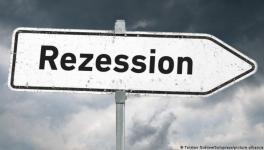How Museums are Combating the Energy Crisis

'Anti War Drawings, 2022': an artwork by Dan Perjovschi at a museum in Kassel
In Strasbourg, France, museum visitors are now facing closed doors more frequently. The city's nine museums are now closed two days of the week. Like many of France's cultural institutions, they're following President Emanuel Macron's call to save resources.
Meanwhile, Paula Orell, director of the Contemporary Visual Arts Network for England (CVAN), warns of a "new state of emergency" for the already pandemic-weakened British museums. The London-based network lists the consequences of the energy crisis triggered by Russia's Ukraine invasion in a database.
In Germany, too, a crisis scenario is looming — and those involved in the country's museums, as well as politicians and the general public, are worried. The greatest concern is the exorbitant rise in energy costs. Gas could triple in price, and electricity could double in price, according to a recent DW interview with the Prussian Cultural Heritage Foundation, which is responsible for some of Berlin's major museums. Furthermore, inflation is causing materials, transport and labor costs to skyrocket.
In light of such figures, Federal Commissioner for Culture and the Media Claudia Roth warns of a "cultural recession," a decline in cultural activities. "Museums, theaters, cinemas and concert halls are energizing places of education, encounter, social warmth and community," the Green Party politician said. For this reason, she feels such institutions must be kept open over the winter and supported as "anchors of democracy."
Ina Brandes, chairwoman of the Conference of Culture Ministers, expressed a similar view. However, the arts and culture industry must also make a "noticeable contribution to saving energy," she added.

Are cultural assets like this painting in danger if the air humidity is no longer optimally adjusted?
Political help on the way?
What Germany's arts and culture industry can expect from politicians is becoming apparent after the most recent discussions between German Chancellor Olaf Scholz and the heads of government of the federal states. The agreement drawn up after their talks mentions aid for the cultural sector in two places.
Firstly, funding will be set aside in 2023 to provide targeted assistance to cultural institutions.
Secondly, federal and state governments will discuss additional measures for the culture industry should they become necessary.
While the German Cultural Council welcomes the resolutions, it is nevertheless still sounding the alarm.
Museum exhibits are in danger if there are energy shortages, warns the German Cultural Council's managing director Olaf Zimmermann. There are not enough air-conditioned storage spaces to protect all the works. In an emergency, he says, people will have to consider which artworks they really want to protect. "What is missing is prioritization," Zimmermann said in an interview with German newspaper Neue Osnabrücker Zeitung.
Meanwhile, as an energy-saving emergency measure, the German Museums Association advises museums to use "extended climate corridors." In other words, instead of setting specific temperatures, there should be a temperature range that is considered acceptable, Sina Hermann, project manager for climate protection and sustainability at the German Museums Association, told DW. However, she adds, an optimal climate range depends on the collection in question and must be decided on by the museum's conservators.

Amid the crisis and rising gas and electricity costs, museums also need to save energy
An energy-saving pioneer in Stuttgart
Whether it includes light-sensitive graphics or heat-sensitive paintings, each exhibit requires its own unique temperature conditions.
Museums must therefore regulate the humidity and temperature of their rooms, which of course requires energy.
For many years, the International Council of Museums (ICOM) set out guidelines that museums were required to follow. A room, for example, should have a 50% humidity level and a temperature of 20° Celsius (68°F). "Many museums have not questioned the standard values until now," says Sina Hermann.
By March 2023, the German Museums Association aims to provide museums with energy guidelines.
The Staatsgalerie Stuttgart is a pioneer in energy and environmental management. Since 2016, the museum with its collection of 400,000 exhibits has been reducing its energy consumption. The museum's old building has been renovated for energy efficiency; nighttime outdoor lighting has been switched off; lamps have been fitted with energy-saving light-emitting diodes; and the hot water for the staff has been turned off. "We have reached all our energy-saving goals so far," says museum spokesman Georg Rotha.
Other exhibition venues have also developed ideas for sustainable museum management. The Städel Museum in Frankfurt, for example, heats and cools parts of its exhibition rooms with a geothermal system instead of using gas. Similarly, the Museum Fridericianum in Kassel and the Kunsthalle Bremen also use geothermal energy in lieu of gas.
Stefan Simon, head of the Rathgen Laboratory at the Prussian Cultural Heritage Foundation in Berlin, is an expert on saving energy in museums. He is particularly critical of new museum buildings: "The more recent the construction date, the more modern the museum, the higher the energy consumption, the more extensive the technology."
This cannot continue, Simon said in an interview with Bayerischer Rundfunk. He notes: "Cultural assets are not lost because the relative humidity is set incorrectly in museums, but because there's a fire, because of a natural disaster, or because of a war, like the one we're experiencing in Ukraine at the moment."
This article was translated from German by Sarah Hucal
Get the latest reports & analysis with people's perspective on Protests, movements & deep analytical videos, discussions of the current affairs in your Telegram app. Subscribe to NewsClick's Telegram channel & get Real-Time updates on stories, as they get published on our website.
























